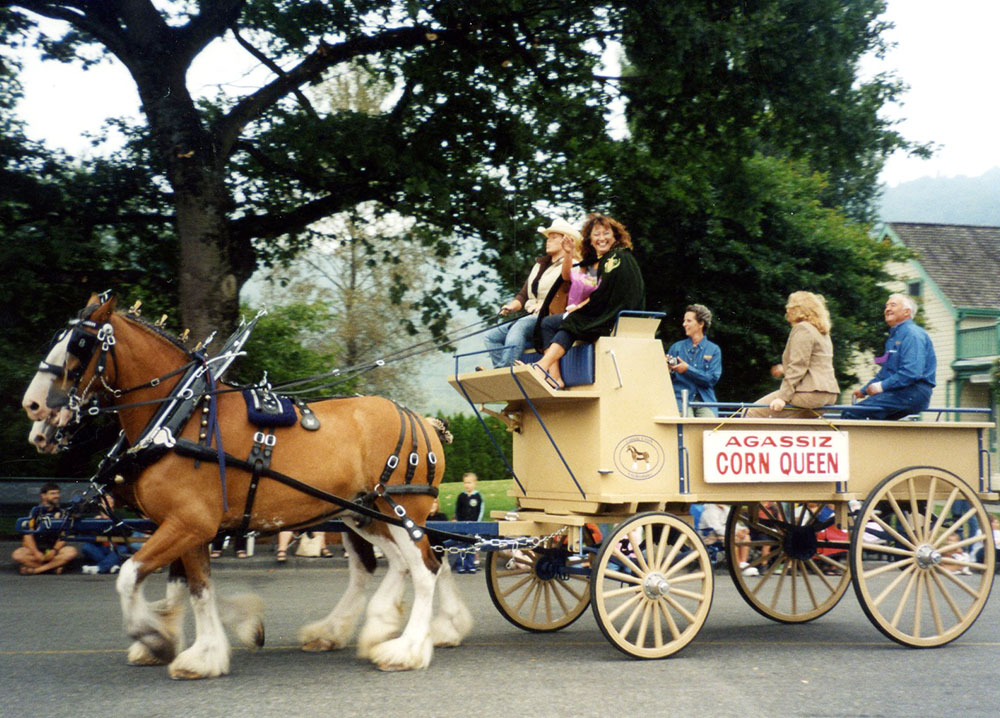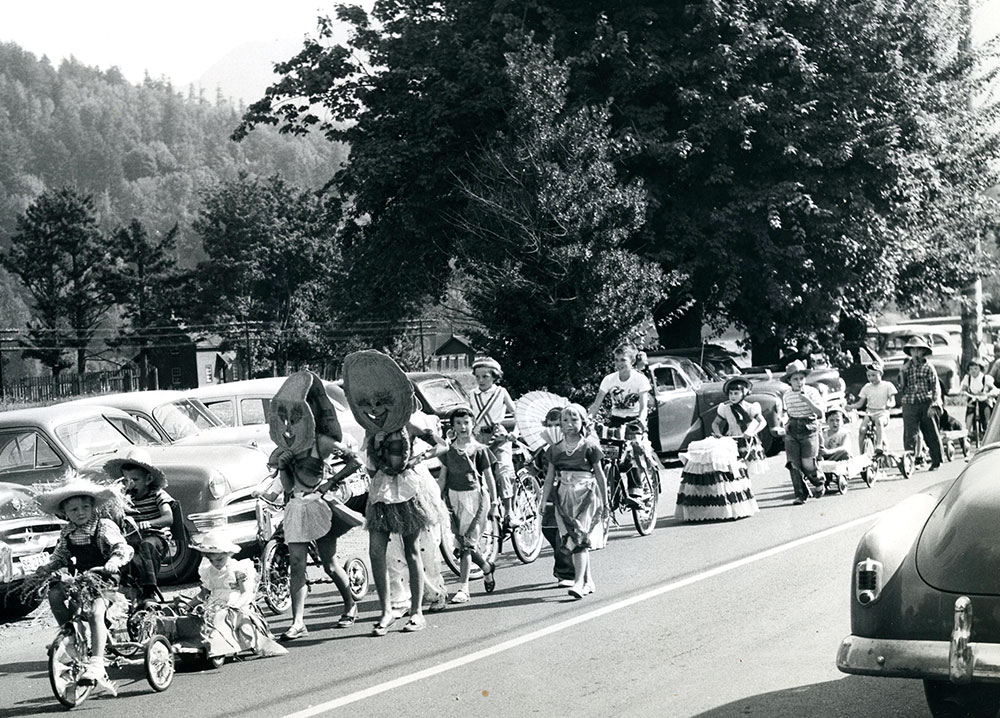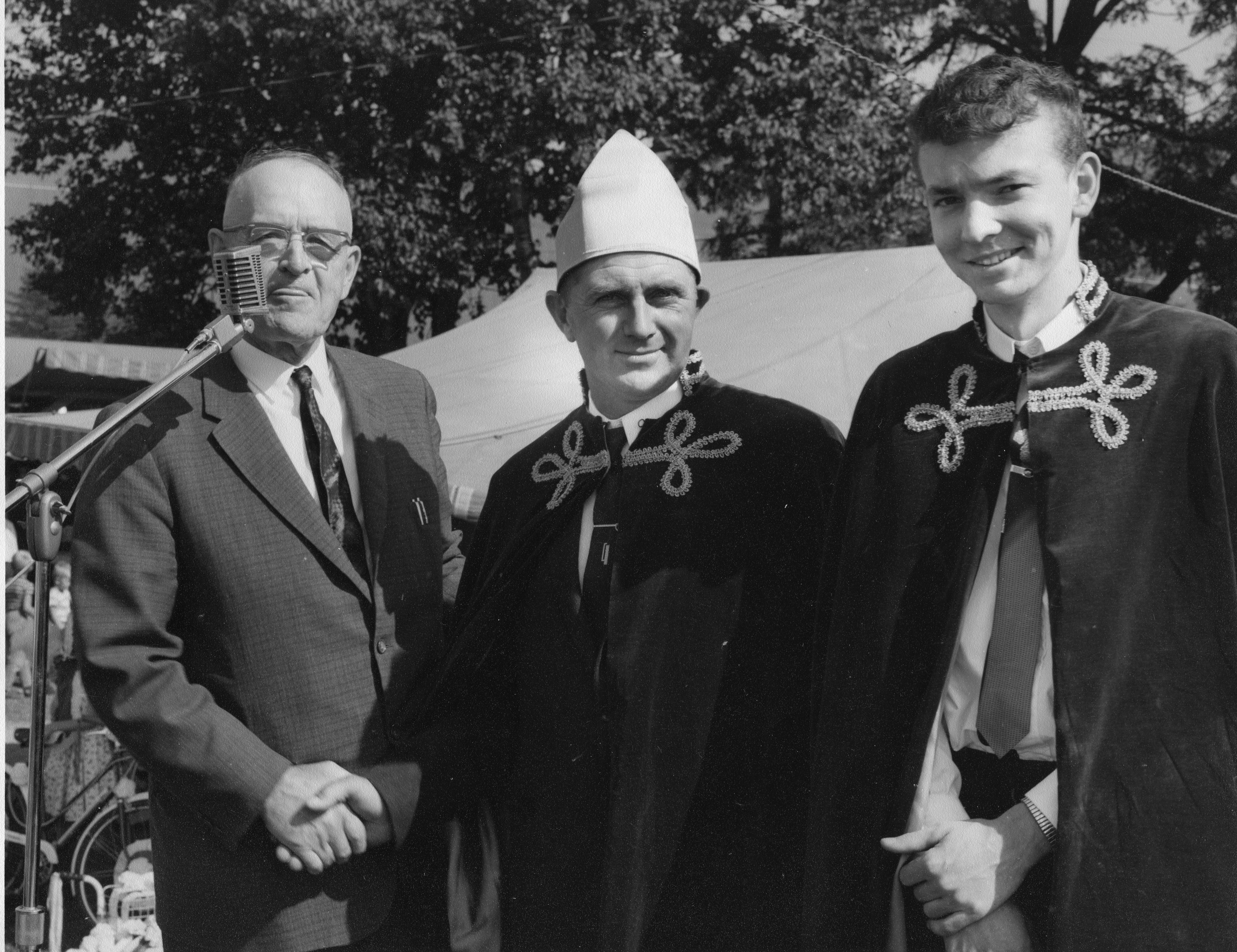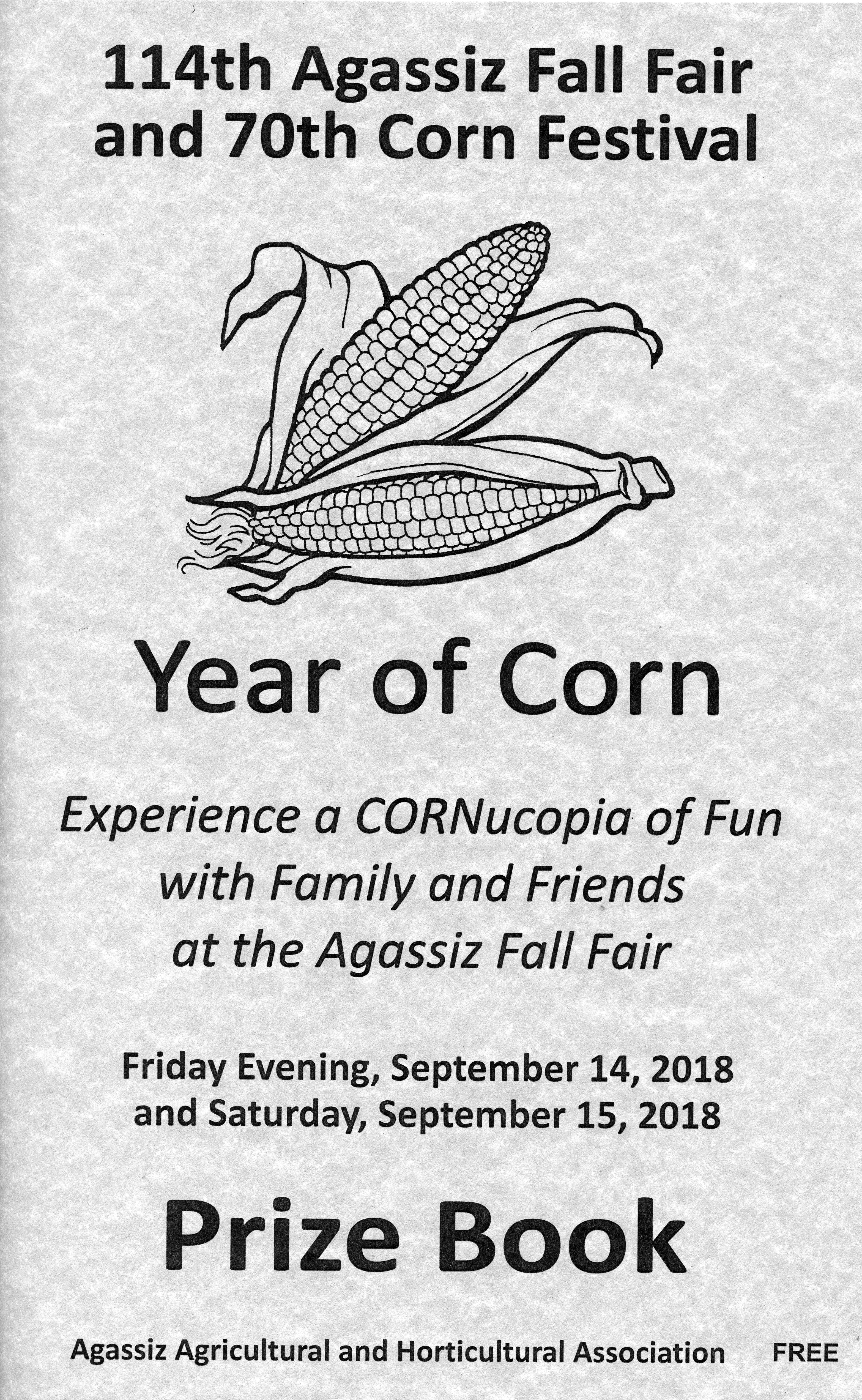Agassiz’s Corn Culture
The Agassiz Agricultural and Horticultural Association was originally founded as the Kent Agricultural and Horticultural Association on November 16, 1899. Since 1901, it has organized the annual Agassiz Fall Fair to showcase the best local agriculture, horticulture, orchard, and livestock efforts.
In 1949, the Agassiz Fall Fair expanded to include a Corn Festival; this tradition has continued every year since. The Agassiz Harrison Board of Trade developed the Corn Festival as a means of marketing the prime local industry. Initially, sweet corn was the focus, but it was soon replaced by field corn as the dairy industry expanded in the District of Kent. In 1952, the Agassiz Fall Fair and Corn Festival were combined into a single event.
The Corn Festival crowns Corn Royalty each year. For 58 years a Corn King from the community was selected. The first Corn Queen, Michelle Stuyt, was crowned in 2007. The honour of the title of Corn King/Queen is awarded to a local farmer who produces the best quality and greatest quantity of corn per acre. The Corn King/Queen competition is open to anyone in the community who has a minimum of two acres of field corn. Judging is based on field cleanliness, corn uniformity, corn maturity and efficient nitrogen use.

Agassiz’s first and only Corn Queen, Michelle Stuyt, on a horse drawn wagon with Victoria Brookes, Alex Charles and Rita Bruneski, 2007.
Each year, an average of 10,000 people attend the Agassiz Fall Fair and Corn Festival. Hundreds of local volunteers come out to support the event which includes:
- a parade;
- musicians and dancers;
- a midway;
- a corn husking competition;
- a goat milking contest;
- an antique tractor pull;
- a Farmer’s Market;
- a chicken and corn barbeque; and
- arts and crafts, painting, needlework, baking, canning, floral, fruit, vegetable, and photography entries in the Agricultural Hall.
The 2018 theme was the “Year of the Corn.” For six years, the BC Association of Agricultural Fairs and Exhibitions has awarded Agassiz the coveted title of “Fair of the Year.”
Corn culture is truly the heritage of Agassiz and the District of Kent. The consistent cooperation of community members has ensured the continued success of our corn crops and dairy herds over the past 130 years. Corn and cows are the lifeblood of our families and will hopefully continue to put food on our tables for centuries to come.




